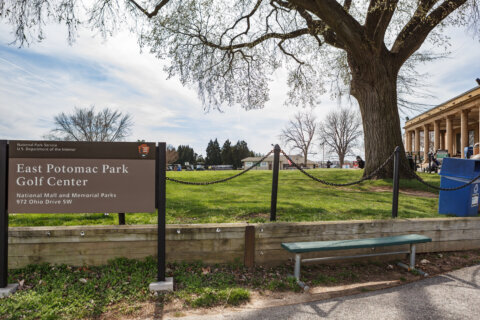Since the 1970s, it has been illegal to swim in the Anacostia River — and when it comes to fishing, you’re also warned to limit the consumption of fish from the river and to not eat certain species.
Pollution has led to the warning and bans, but over the past few years, those who watch over the major D.C. region waterway say they’re seeing progress.
“We are making big steps in the right direction,” said Trey Sherard, riverkeeper for Anacostia Riverkeeper.
Sherard said parts of the river have been shown to be safe enough to swim in more than half of the time when water quality tests taken over the past four years have been examined.
Anacostia Riverkeeper had actually planned a swim earlier this year, according to Sherard, but it wasn’t the water quality that prevented the swim from happening. Instead, it was an insurance policy required by the city that the nonprofit did not have.
He said that with sewage from Maryland and the District, storm runoff containing animal waste, and other contamination still getting into the river, being able to swim safely is still a ways down the road, but things are moving in the right direction.
Sherard said the goal is not only to make the river swimmable, but also fishable. Right now, the warning advises residents to limit their consumption of fish caught in the river, and to not eat carp, eel or striped bass caught in the waterway.
To get the full-time green light for fishing and swimming, Sherard said a lot needs to happen including the Anacostia River Sediment Project, which will be completed by both the District Department of Energy and the Environment and the National Park Service.
According to Anacostia Riverkeeper, that work which will remove toxic sediment was expected to begin last January, but has not yet started.
“We need more dredging for climate resilience, for flood mitigation, a lot of things,” Sherard said.
Dredging, according to Sherard, would make the river deeper so it can better handle storm water. Right now, Sherard said the river is too shallow.
“We’re actually a centimeter shallower every year, even now with all the laws and enforcement that we have,” Sherard said.
He said the plan to remove the toxic stuff from the river will also allow for the healthy sediment that is collected to help create new wetlands, which Sherard said the area needs.
Sediment issues aside, Sherard said one type of trash is also slowing the healing process of the river.
Thanks to the fantastic volunteers who collected 202lbs of trash at Anacostia Park this morning!
This cleanup was sponsored by Two for the Trails @AthleticBrewing. #ComeToTheRiver #CleanWaterwaysCleanup #AnacostiaRiverConnect pic.twitter.com/5PA6sG65op
— Anacostia Riverkeeper (@AnacostiaRrkper) October 14, 2022
“Plastic bottles are 60% by weight of all of the trash that we actually see on the river itself and on the shorelines, we know that from the cleanups we’ve done,” Sherard said.
He said that while foam and bag pollution is down due to city laws, he’s hopeful that a similar law pertaining to plastic bottles may also materialize down the road.
Another project Sherard believes will lead to better water testing results will be the completion of the Northeast Boundary Tunnel Project, which will dramatically increase the city’s capacity for safely storing sewage. That project is set to be completed next year.








